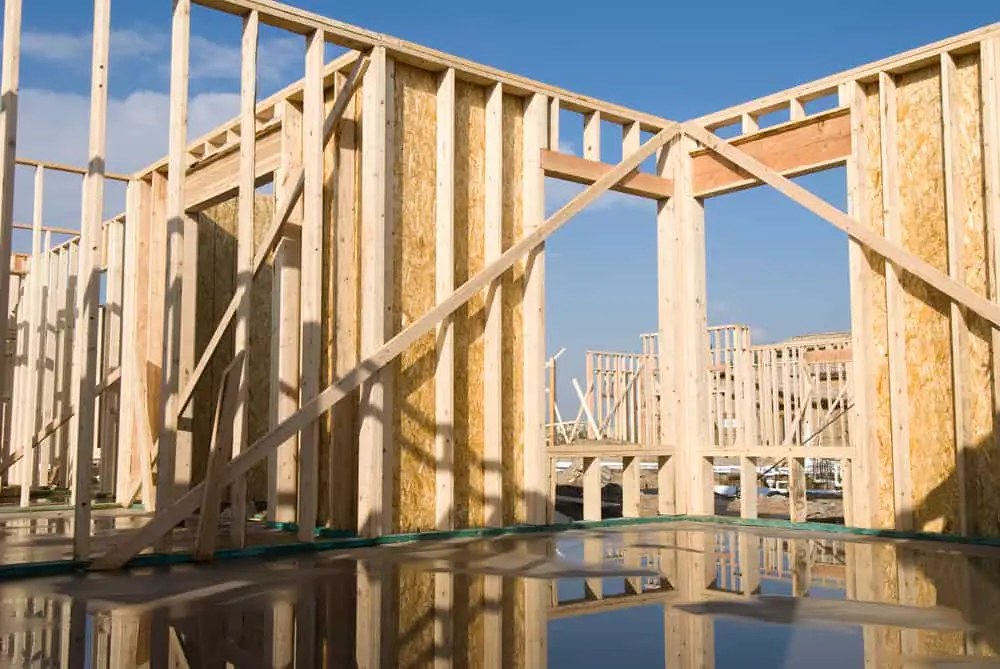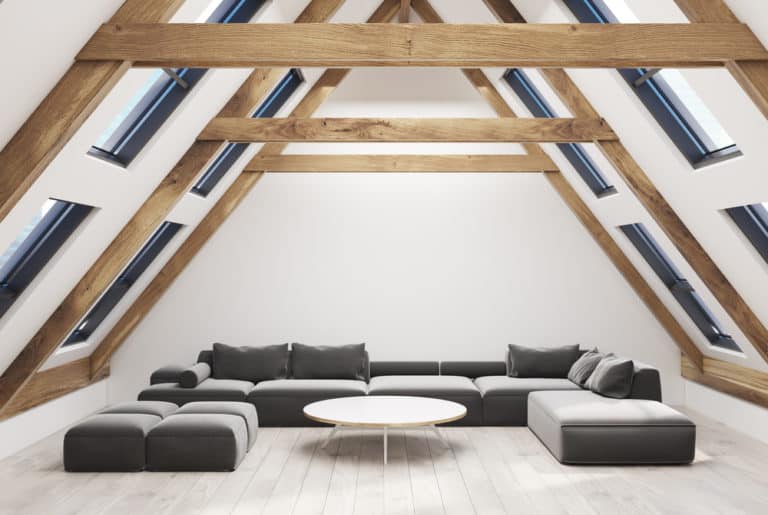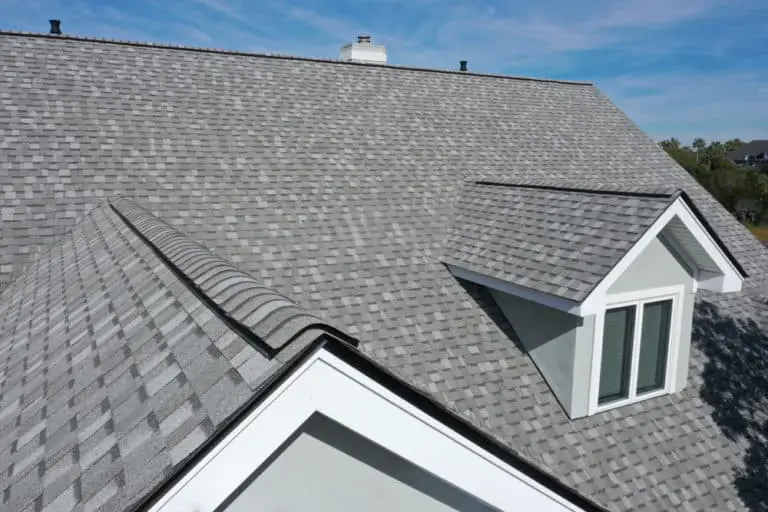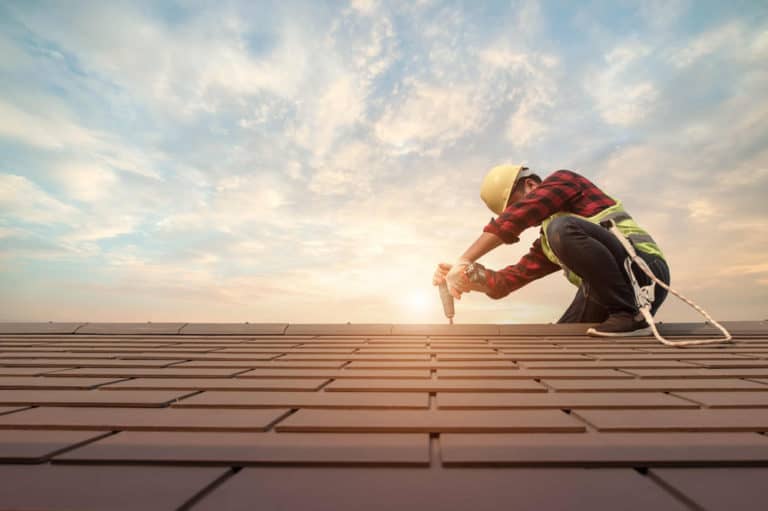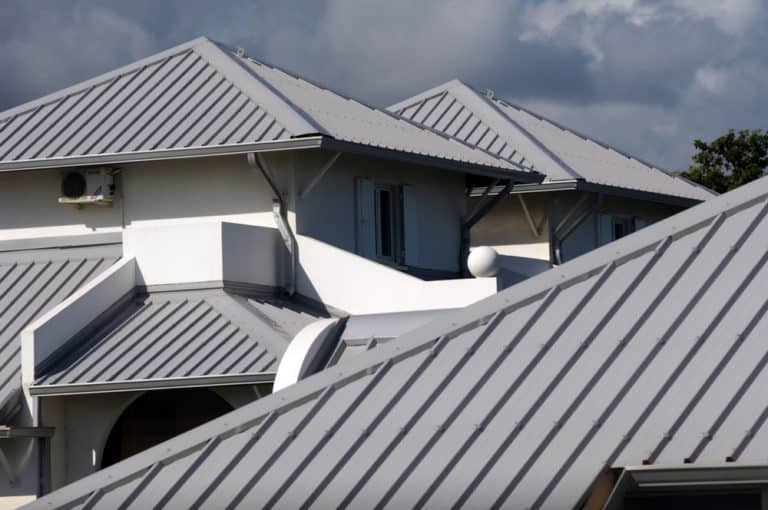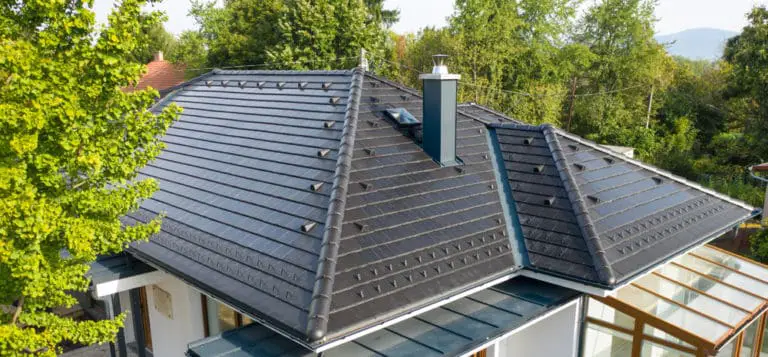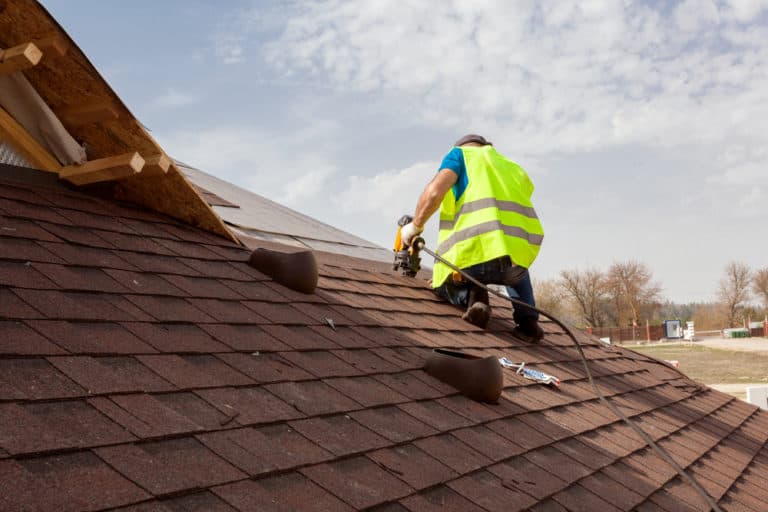Can You Roof Over Wet Plywood?
If you have a noticeable curve to your roofing and are worried about the roof leaking, don’t worry; you’re not alone. We built a wooden cottage a few years ago; the contractor assured us he could do the roofing in rainy weather. He said the plywood would dry out without looking bent; that was not the case; I wondered whether you could roof over wet plywood.
You should never install a roof over wet plywood or another roof sheathing. The water that is trapped underneath the roofing will heat up. That combined with the roofing weight will cause the wood to swell, bend, warp and cause pits where the steam from the heated water escapes.
After speaking to an expert in roofing, I knew I needed to get the problem fixed before the problem got worse. I contacted our contractor, but he had disappeared. In the end, I had to pay more to get a professional roofer to fix my roof. It was an expensive lesson, so I thought I would share the information I wish I had before having my roof installed over wet plywood.
Can You Install Roofing Over Wet Plywood?
Should you install roofing if you live in an area prone to rain and the plywood is wet? You should never install roofing over plywood. Plywood doesn’t get damaged from water or rain immediately, but it needs to dry out before installing the roofing.
Keep in mind if the plywood is wet when the roof shingles are installed, the damage the water causes will influence how well the roof holds up and the overall look. The expansion and contraction of the wood when it dries can cause all kinds of problems.
Regarding roofing code violations, installing roofing over wet plywood is against the roofing code, meaning if your contractor installs the roof over wet plywood, it could lead to fines and insurance issues should something go wrong.
What Can Happen If You Install Roofing Over Wet Plywood?
If you or your contractor are thinking of roofing over wet plywood, you need to take a step back and rethink that decision. Some DIYers and contractors might think it’s ok to roof over wet plywood as it will dry beneath the roof and be fine. However, that is not always the case.
The Consequences Of Roofing Over Wet Plywood
Here are a few more serious things that can happen if you should roof over wet plywood:
There Will Be Fastener Issues
One of the first signs of trouble if you try roofing over wet plywood is your shingles won’t fasten properly. The water causes wood to swell, warp and bulge. The shingles are fastened with adhesives or roofing nails.
As the wood expands and retracts, the nails might become loose, and you might get leaks. The adhesives won’t stick as it the manufacturers intended, the roofing will become sticky and slippery, and the roof shingles will slip and fall off or get stuck in a skewed position.
You’re Warranty Will be Void
Most manufacturers of roofing materials give warranties on their products, but the warranty might be invalid if the roof was installed improperly. That means if you knowingly install the roofing on wet plywood and it creates a problem with the roofing material, you might lose the warranty.
It Creates Hazardous Working Conditions
Before you install the roof on your home, you should consider speaking to an expert contractor about the best way to move forward should the timing be during the rainy or snow season. If you install roofing and the plywood is wet or has a thin layer of snow or ice, it creates dangerous working conditions.
The roof could become slippery, especially if there are sheets of ice that have formed on the plywood. Speaking to a contractor will help you decide when the best time would be to install the roofing.
It Could Cause Cupping
The roofing standard that most contractors use is to set the roof rafters at least 2ft apart, but they install plywood decking with a minimum of 7/16-inches thickness. A few builders will try to cut costs by installing thinner 5/16-inch plywood; as a result, the thinner plywood is more likely to cup than the thicker 7/16-inch.
It Could Cause Rotting
If you install the roofing over wet plywood, it could cause wood rot or fungus and mildew to grow. That could compromise the integrity of the plywood as the added weight of the roof could lead to parts of the roof collapsing, leaking, or rotting.
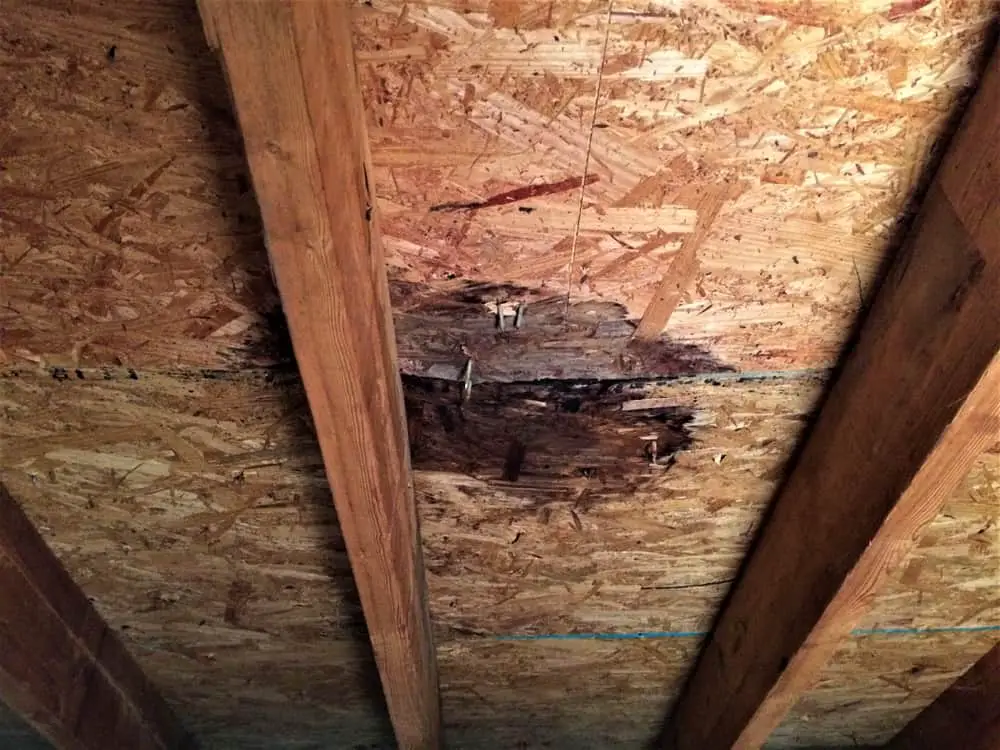
The Plywood Could Tear
Wet plywood will be compromised, and when the shingles are fastened, the pressure might rip the plywood apart, and you will need to replace it. It could also tear with the weight of roofers, making it a hazardous working condition.
How To Prevent The Plywood From Getting Wet
There are ways to prevent the plywood from getting wet before installing the roof, saving you time and money should there be a rainstorm. Here’s how:
Waterproofing Your Plywood
Waterproofing might sound like a lot, but if you live in an area prone to rain or are installing a roof in cold, wet conditions, you could add a layer of waterproofing to keep the plywood dry. Waterproofing your plywood also has these added benefits:
- Waterproofing extends the life of the plywood.
- Waterproofing plywood will keep the wood dry during storms.
- Waterproofing helps prevent mold and mildew from forming.
- Waterproofing helps minimize the damage of bugs.
- Waterproofing helps prevent the plywood from bending, cupping, and swelling.
There are three waterproofing materials, should you decide to use them as a preventive measure for keeping the plywood dry during the cold and rainy season. These three materials are polyurethane, waterproof paint approved for use on plywood, and epoxy. You need to speak to your contractor to determine which one best suits your home’s needs.
Adding An Underlayment To The Plywood
You can add an underlayment to the plywood top for added protection. It will help keep the plywood dry for a few days. If you choose to install underlayment, you can do it in the same way you install shingles. It will only add a thin layer of protection, but it should help to protect from any immediate damage.
Adding A Tarp
You can add a thick tarp over the plywood to protect it from the rain. You need to choose a tarp that is thick enough and the right size to get the right amount of coverage. You need to build a simple structure to add the tarp to (imagine a tent over the work area), and when the rain comes, you add the tarp tent to your roof to keep it dry.
What To Do With Wet Plywood Before Roofing
When you need to install a roof on your home, and there is a rainstorm while the contractor is busy or it rains the day before the roofing will be installed, do you need to replace all the plywood, or is there a way to salvage it?
Plywood is made from thin layers of softwood laminated together with a strong adhesive like polyurethane. The adhesive is waterproof, but the wood will swell and separate as its not waterproof. Softwood is very porous and absorbs water quickly.
The main goal is to get the water that the wood has absorbed to evaporate. Here is what you can do to dry out the plywood before you roof over it.
Remove The Plywood
Firstly you should remove the plywood sheets that have already been installed. It may cost extra time and effort, but in the end, it will save you a lot of money, and you won’t be violating the roofing code. The edges can stay wet even if both faces of the plywood are dry. So removing the plywood and allowing proper air circulation to get the edges dry is crucial.
Find The Best Place To Dry Plywood
Then you need to do is find a suitable place to dry the plywood. You need to ensure the place has proper ventilation, so the wet, humid air is forced out as it circulates. Stack the wet plywood with blocks in between and ensure all the sheets are lifted off the ground. All the sides and surfaces should be exposed to the air to dry out properly.
Raise The Temperature
If the room you have chosen is enclosed and you have no other place to let the plywood dry properly, you must turn up the room’s temperature. It will speed up the drying time and lessen the damage.
If you don’t have a room with temperature control, you can place a heater at the mid-level to the plywood to speed up the drying, and to help eliminate the humidity; you can add a humidifier. It will help leave the air hot enough without causing further issues.
How To Repair Water Damaged Plywood
If after the rain and the storms subside, you find that some of the measures you took to keep the plywood from getting wet might not have worked, and you can’t afford to buy new plywood; you can repair the damaged plywood. Here is how:
Step 1
Use a router to cut off any damaged or blistered piece of laminate from the sheet. Peel the pieces completely back until the damaged laminate pieces are flush with the sheet. You now need to sand the edged of the cuts so the edge tapers onto the sheet’s surface underneath.
Step 2
Use a chop saw to cut a plywood patch with the same thickness as the damaged sheet. Cut out a patch about an inch bigger than the hole you are patching. Now sand at an upward-facing ½-inch bevel along the border of the hole. Sand a downward-facing ½-inch bevel on the patch.
Ensure you make the bevel gradually to ensure it fits the hole perfectly. You can test the fit often to get the closest fit possible; eventually, you will have a patch that fits perfectly in the hole and is flush with the edges.
Step 3
You should clean up all the cut and sanded pieces with a brush. Mix the wood epoxy adhesive a little at a time as epoxy hardens (sets-up)within a few minutes of mixing it, so if you make too much, it will harden before you get a chance to use it.
Step 4
Use masking or painter’s tape to cover the edges of the repair so you don’t get epoxy on the undamaged area. Fill all the places where you cut and peeled the damaged wood in with the epoxy by using a putty knife.
Smooth the area where you use the epoxy as a filler until it’s flush and level with the surface of the plywood sheet. Leave the repaired sheet for at least 48 hours so the epoxy can dry completely.
Step 5
After the 48 hours is up, it’s time to fill in the beveled holes. The reason you don’t fill all the problem areas at once is that plywood is made up of layers. It helps dry the epoxy quicker if the repairs are done in two stages. You need to apply a bit of epoxy to the upward-facing beveled surface of the holes you need to patch.
Press and hold the patch into the hole until it’s level with the sheet’s surface. Scrape the excess epoxy off. Now take a staple gun and secure the patch on four sides. Hold the staple gun off the surface a bit, as the staples need to be removed after the patch dries. Leave the patched sheets to dry for 48 hours.
Conclusion
When you want to install roofing, it needs to be on dry plywood. There are too many issues that will compromise the integrity of your roof. It creates hazardous working conditions and goes against the roofing codes in most states. The best you can do is to prevent the plywood from getting wet.
You can contact a professional contractor to ensure that you plan the roofing for a time when its not rain season. You can also waterproof the plywood if you stay in a humid area prone to rainstorms.
Resources
- https://www.cjonline.com/story/lifestyle/home-garden/2016/05/20/home-roofs-shouldnt-be-installed-over-wet-wood/16586912007/
- https://www.seattletimes.com/life/lifestyle/roof-problems-may-have-started-with-wet-plywood/#:~:text=A%3A%20It%20is%20never%20a,where%20the%20steam%20finally%20escapes.
- https://www.finehomebuilding.com/forum/wet-plywood-during-construction

